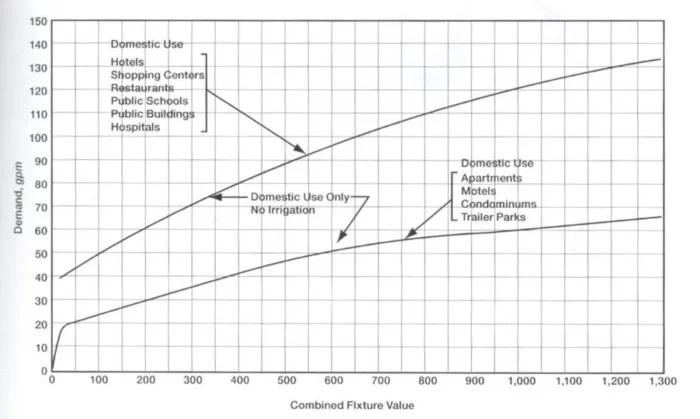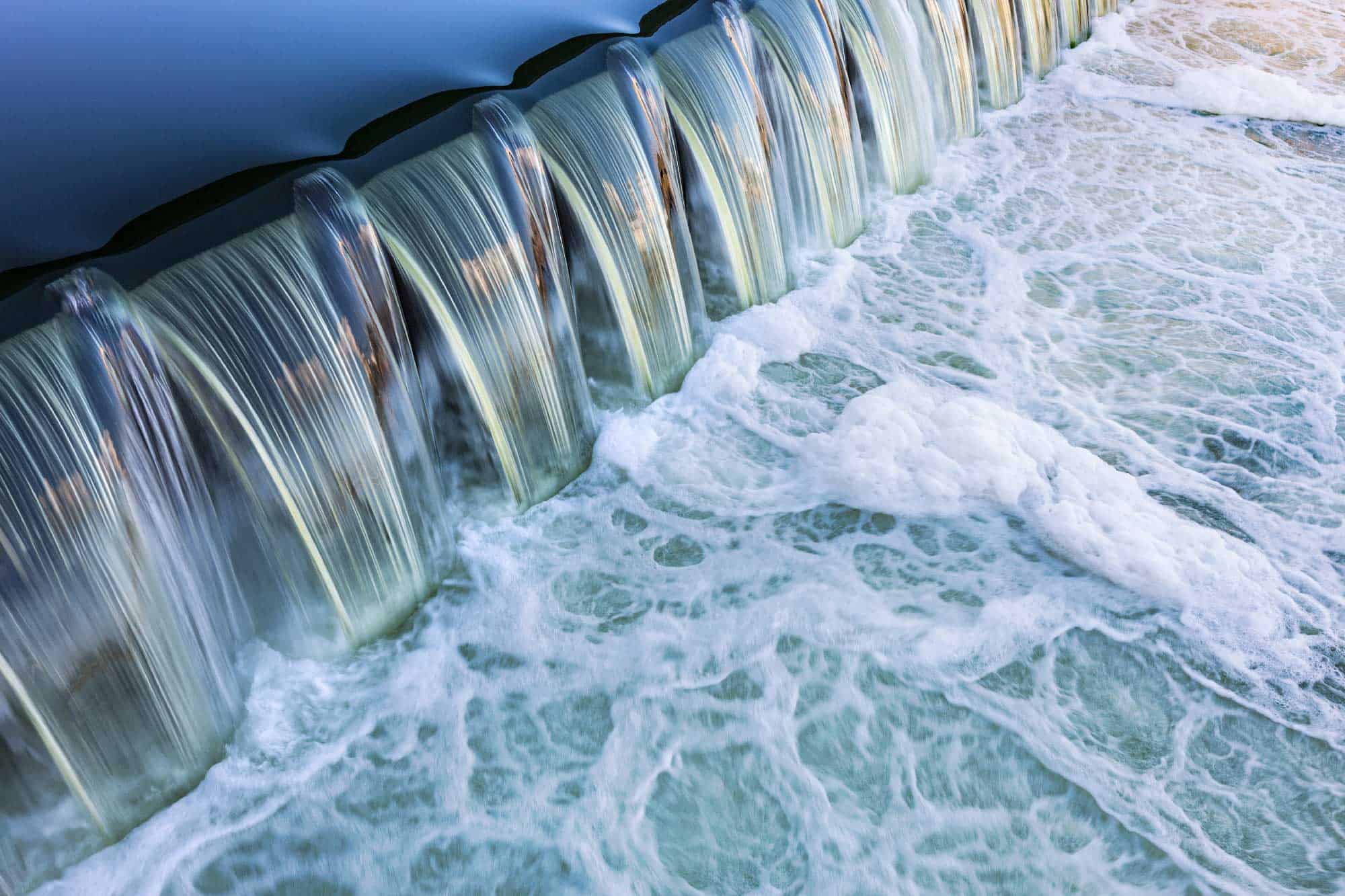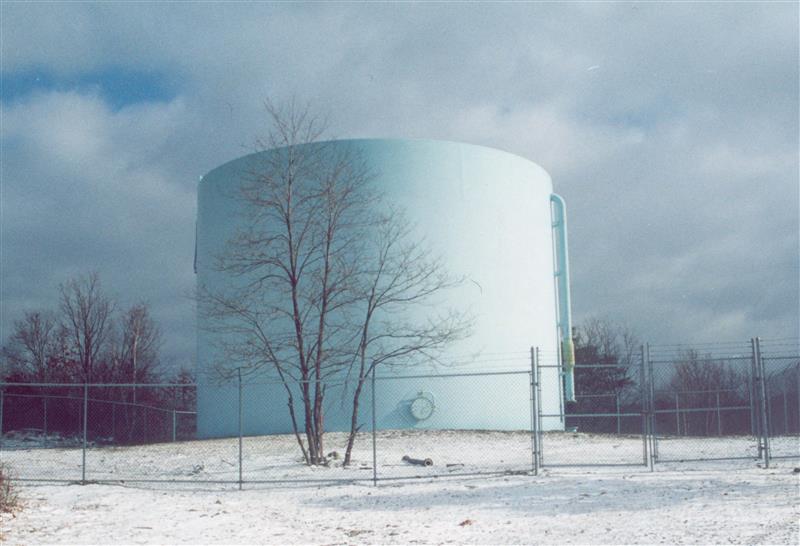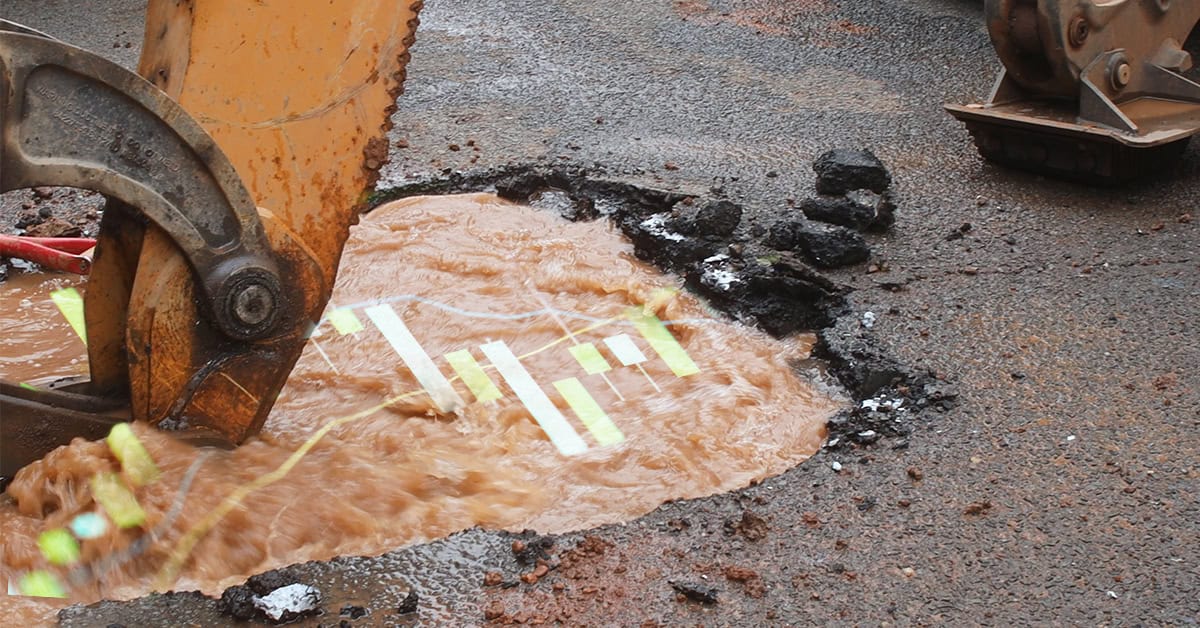This week we’ll talk a pseudo-law that comes up in premise plumbing. For nearly the last 100 years, determining the peak flow in a pipe has been determined by the fixture unit method.
The fixture unit method (in some places called fixture value method) was developed by Roy B. Hunter from the US Bureau of Standards, based on research conducted by Hunter in the 1920s and 30s (Hunter, 1940). Every fixture in a building was assigned a fixture unit value. For example, a flush tank toilet uses 6, and a shower was 2.5, and a kitchen sink 1.5 (AWWA, 2014).
If a designer started at the most upstream fixture and worked downstream, at each junction, the Law of Conservation of Mass would state that the flow from each branch should be added. However, Hunter asked the question of how likely it would be that every fixture in each branch flowed simultaneously. The probability that each would flow simultaneously needed to be accounted for. Hunter developed a method based on sound probability theory and empirical data to calculate the flow that would not be exceeded 99% of the time.
Hunter developed a set of curves that could be used to calculate the peak flow based on the number of upstream fixture units. Those curves have been modified over the years. But the basic idea has remained. The designer would add up the number of upstream fixture units and use the appropriate curve to determine the peak flow.
Figure 1. Hunter’s Curve (From: AWWA M-22)
An example of the calculation is shown in Figure 2. If the two streams flowing out of a junction have a peak flow of 30 and 35 gpm, the Law of Conservation of Mass would say that the outflow should be 65 gpm. But the Law of Conservation of Fixture Units would say that the correct approach is to add the fixture units from each upstream branch, which would give 500 fixture units (lower curve) and a flow of 48 gpm. This is significantly lower and more reasonable than simply adding inflows.
Figure 2. Example of Application of Fixture Unit Method
For this type of analysis, the Law of Conservation of Fixture Units gives a more reasonable solution than the Law of Conservation of Mass.
While the logic behind the fixture unit method still holds, experts felt that the values used in the calculations were out of date and needed updating. As part of the latest update for AWWA M-22, Sizing Water Service Lines and Meters, a revision to the method is being incorporated into the manual to reflect modern plumbing fixtures and water use patterns. The revised fourth edition of this manual is set to be published in the very near future. If you are working in this area, you ought to consider picking up a copy of the fourth edition manual.
References: AWWA, 2014, Sizing Water Service Lines and Meters, Third Edition, AWWA Manual M-22, Denver Col.
Hunter, R.B., 1940, Methods for Estimating Loads in Plumbing Systems, Report BM S65, National Bureau of Standards, Washington, DC.
Want to learn more from our resident water and wastewater expert? Join the Dr. Tom Walski Newsletter today!











